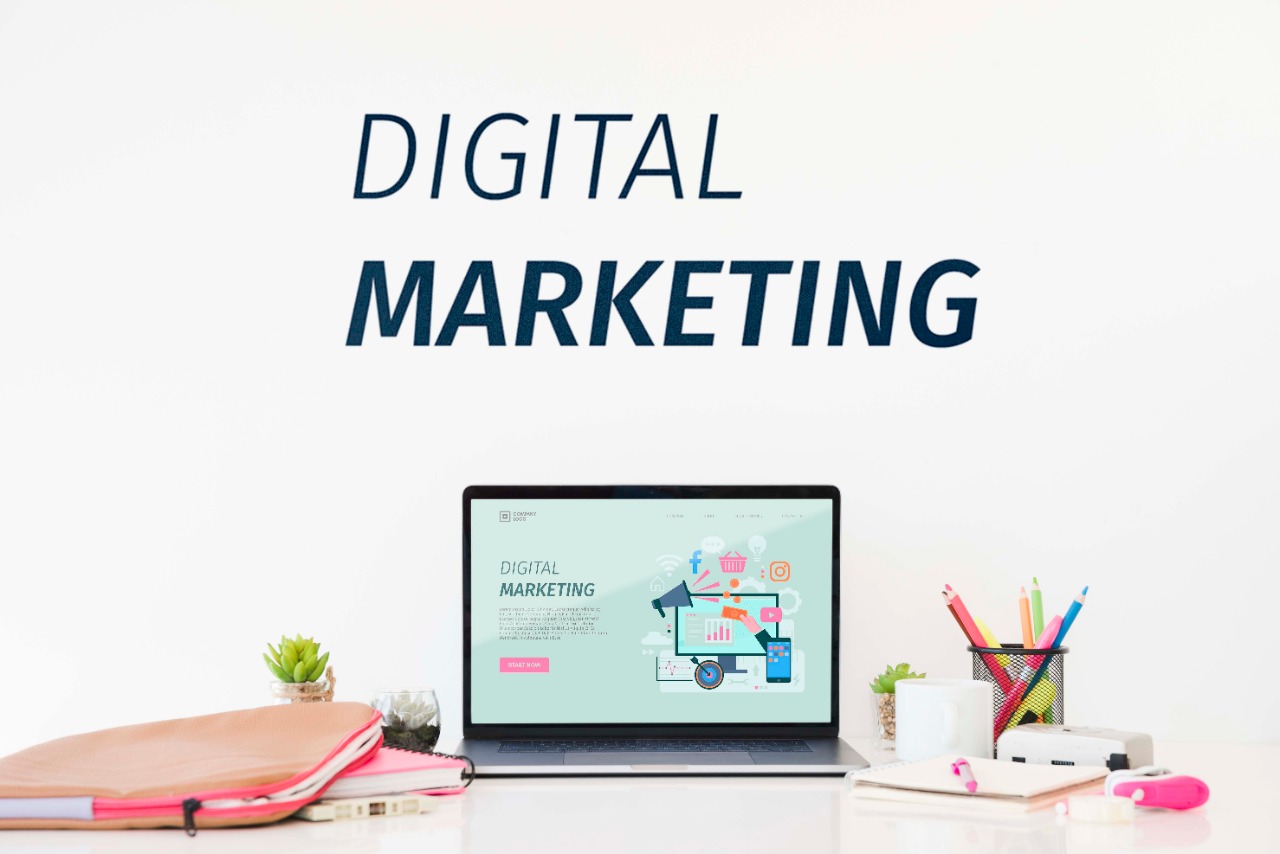In the ever-evolving world of digital advertising, scaling your ad campaigns efficiently in 2025 is not just a matter of increasing budget — it’s about strategically optimizing each element of your funnel. Whether you’re managing a startup brand or a well-established business, understanding what truly drives performance this year is key. And as professionals seek to stay ahead in this competitive space, many are turning to advanced upskilling through Digital Marketing Courses in Pune to gain the edge.
Understanding the Concept of Scaling
Scaling your ad campaign means increasing its capacity to reach more people while maintaining — or improving — the cost-efficiency of your results. But before you scale, your base campaign must already be converting well at a small budget. Scaling only amplifies what’s already working. If the fundamentals are broken, scaling will only magnify those flaws.
In 2025, scaling is more dynamic than ever, thanks to AI automation, smarter segmentation, and deeper insights from customer data. Brands are now focusing not only on paid media but on comprehensive funnel strategy, from awareness to loyalty.
What Has Changed in 2025?
Several factors have shifted how advertisers scale campaigns in 2025:
- AI-Powered Optimization: AI is now deeply integrated into ad platforms like Meta, Google, TikTok, and LinkedIn. These platforms use machine learning to automate audience targeting, bidding, and even creative personalization.
- Privacy & First-Party Data: With stricter data privacy laws and the end of third-party cookies, marketers must rely more on CRM and consented user data.
- Multi-Channel Attribution Models: Single-channel campaigns are less effective. Cross-platform measurement tools have become more accurate, allowing advertisers to understand how different touchpoints contribute to conversions.
Foundation Before Scaling
Before you even consider scaling your campaign, these basics should be covered:
- Product-Market Fit: Scaling a poor offer leads to budget wastage. Ensure there’s a validated demand for your product.
- Proven Funnel: You must have a well-performing sales funnel. Your ad > landing page > CTA > offer flow should convert users at profitable rates.
- Tracking Infrastructure: In 2025, advertisers use tools like Google Analytics 4, Meta Events Manager, and customer data platforms (CDPs) to track performance accurately.
- Budget Allocation Strategy: A minimum 70/30 rule works well — 70% of budget toward proven ads, 30% for testing new creatives and audiences.
10 Proven Strategies to Scale Your Ad Campaigns in 2025
- Use CBO (Campaign Budget Optimization)
On platforms like Meta Ads, using CBO allows you to distribute budget across ad sets more efficiently based on real-time performance. It ensures your budget is automatically reallocated to the best-performing audiences.
- Ad Creative Diversification
Creatives are the backbone of paid social success. In 2025, video-first formats dominate, especially 15-second TikTok-style vertical videos. Use tools like Pictory, Canva Pro, and Lumen5 to churn out UGC-style content at scale.
Ensure that your creative library includes:
- Testimonials
- Product demos
- Behind-the-scenes content
- Hook-first storytelling formats
- Implement Dynamic Ads
Dynamic ads allow platforms to adjust product titles, prices, and creatives based on user behavior. Especially powerful for e-commerce, this tactic works exceptionally well on Facebook, Instagram, and Google Shopping.
- Leverage Lookalike Audiences
Even with the reduced effectiveness of third-party cookies, platforms still create powerful lookalike audiences based on your first-party data (email lists, website visitors, app users). Segment them by value tiers (e.g., high LTV customers) for best results.
- Automated Rules for Scaling
Set automated rules to manage scaling without constant manual intervention. For example:
- Increase budget by 20% if ROAS > 3x
- Pause ad if CPA exceeds ₹500
- Duplicate and relaunch high-performing ad after X conversions
These rules can be implemented in Meta Ads Manager or third-party tools like Revealbot or Madgicx.
- Focus on Mobile-First Experiences
Most traffic in 2025 comes from mobile. Ensure your landing pages are lightning-fast, optimized for mobile, and have seamless checkout experiences, especially if you’re in e-commerce.
Page speed tools like PageSpeed Insights and GTMetrix help diagnose slow-loading pages that kill conversions.
- Cross-Platform Budget Diversification
Don’t rely solely on one platform. For example:
- Meta for awareness
- Google Search for intent-driven users
- YouTube Shorts or TikTok for engagement
- LinkedIn Ads for B2B targeting
This diversification not only reduces dependency risk but also boosts reach and long-term brand equity.
- Utilize Influencer Whitelisting
Influencer-generated content remains potent, but whitelisting — where brands run ads through the influencer’s account — now performs better than traditional brand ads. This increases credibility and engagement rates.
Tools like Insense and Collabstr streamline creator collaboration and whitelisting.
- Data-Driven Scaling via LTV Metrics
Instead of judging a campaign solely by cost per acquisition (CPA), smart advertisers scale based on lifetime value (LTV) of a customer. Use LTV data from tools like Triple Whale, Segment, or even your CRM to create higher-converting audience segments.
- Embrace AI Copy & Creative Assistants
Creative burnout is real. AI tools like ChatGPT, Jasper, Copy.ai, and Midjourney help generate fresh ad copy, headlines, and even visuals. Use these tools for inspiration and speed — but always A/B test before scaling.
Ad Scaling Metrics You Should Track
In 2025, these are the essential KPIs that guide smart scaling:
- Cost per Result (CPR): Cost per lead, sale, download, etc.
- ROAS (Return on Ad Spend): Your most crucial profitability metric.
- CTR (Click-through Rate): Indicates if your creatives resonate.
- Frequency: Overexposure can lead to ad fatigue.
- LTV: Knowing your customer’s worth helps determine how much to spend.
- CVR (Conversion Rate): Essential for both landing pages and checkout flows.
Avoiding Common Scaling Mistakes
Scaling too fast can hurt. Here are the common pitfalls to avoid:
- Raising Budget Too Quickly: Increasing your daily budget by more than 20-30% may push your campaign out of the learning phase.
- Skipping Creative Testing: Even if one ad works, it may not stay effective forever. Constant testing is key to longevity.
- Neglecting Audience Saturation: Monitor frequency. If people have seen your ad 5+ times, it’s time to refresh or rotate.
- Scaling Without Backend Support: If your operations, support, or delivery teams can’t handle the influx, scaling will hurt more than help.
Real-World Scaling Examples (2025)
Case 1: DTC Skincare Brand
A Pune-based skincare brand used a mix of influencer UGC videos, TikTok ads, and Instagram story carousels. After hitting a ROAS of 3.5x with ₹5,000 daily budget, they scaled to ₹30,000/day by gradually increasing 20% budget every 3 days. The result: ₹1.2 Cr in revenue in 60 days.
Case 2: SaaS Product for HR
A B2B SaaS brand started with LinkedIn Ads targeting HR managers and used email remarketing and Google Display for nurturing. By the 4th month, they scaled from ₹30 leads to ₹10 per lead using sequential storytelling ads and lookalike audiences built from CRM data.
Case 3: E-commerce Marketplace
An Indian e-commerce brand switched from a single-platform strategy to a cross-channel funnel: Meta for retargeting, Google for search intent, YouTube for awareness. Their scaled setup used AI-powered bidding and custom automated rules, growing from ₹2L monthly spend to ₹20L with a 4.2x ROAS.
Tools That Make Scaling Easier
Here are some tools marketers rely on in 2025:
| Tool | Purpose |
| Meta Ads Manager | Campaign scaling & rules |
| Google Ads | Search & Performance Max campaigns |
| Hyros / Triple Whale | Attribution & LTV tracking |
| Revealbot / Madgicx | Automation & rule-based scaling |
| Jasper / ChatGPT | Ad copy & content |
| Canva / Pictory | Creative generation |
| Segment / Hubspot | First-party data segmentation |
The Role of Training in Staying Ahead
Scaling campaigns successfully requires deep platform knowledge, an understanding of customer psychology, and the ability to adapt quickly. Businesses across India are now actively investing in skill development to keep pace with these evolving strategies. Many marketers are enrolling in digital marketing training in Pune, where hands-on courses offer real-world exposure to ad platform optimization, data analytics, creative strategies, and scaling techniques used by top brands.
By implementing the right strategies, tools, and mindset, advertisers in 2025 can scale their campaigns profitably and sustainably — not by guesswork, but with precision. From AI-powered creatives to LTV-based segmentation and smart automation, the future of ad scaling is not only accessible but excitingly efficient.
Top of Form
Bottom of Form







